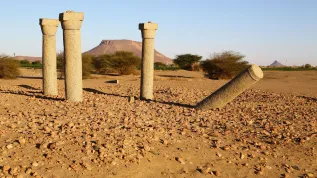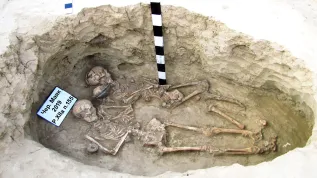
Archaeologists from the University of Warsaw working in Old Dongola (Sudan) analyse traces of elements preserved on the floors of ancient houses to determine how their inhabitants used the space, e.g. where and how they cooked.
'When examining houses, archaeologists very often come across a problem that human activity, such as cooking, keeping animals, grinding grain, does not leave any traces visible to the naked eye such as tools left, built-in installations', says Dr. Maciej Wyżgoł from the university’s Polish Centre of Mediterranean Archaeology.
Assuming that every activity at home leaves an identifiable elemental trace, scientists analysed samples taken from the floors of ancient houses to identify the so-called activity zones and locate places where everyday activities were performed.
'Determining activity zones based on the concentration of elements is important for determining the relationships that occur within the house, including the division of work between representatives of different genders', Dr. Wyżgoł says.
The researchers also compare the use of living space in different periods. This allows them to draw broader conclusions about the changes that had taken place: the identity and religion of the inhabitants of Old Dongola, the former capital of the kingdom of Makuria (currently in the territory of Sudan).
The conclusions from interdisciplinary research are summarized in the Journal of Archaeological Science: Reports.
Dr. Barbara Woronko from the Faculty of Geology at the University of Warsaw, is the publication co-author. The research is related to the larger project 'UMMA - Urban Metamorphosis of the community of a Medieval African capital city', carried out in Sudan under the supervision of Dr. Artur Obłuski, director of the university’s Polish Centre of Mediterranean Archaeology.
As part of the project, researchers analyse the process of transformation of Dongola - the capital of the medieval kingdom of Makuria, an important Christian centre - into a Muslim city in the period between the 14th and 19th centuries. This process continued for many years, often leaving no traces visible to the naked eye in the archaeological material. The use of geochemical methods turned out to be helpful.
Conclusions from the 'UMMA' project research were also presented during the 'Poles on the Nile' conference on June 19-21 in the building of the Faculty of Archaeology of the University of Warsaw. (PAP)
zan/ amac/ kap/
tr. RL













